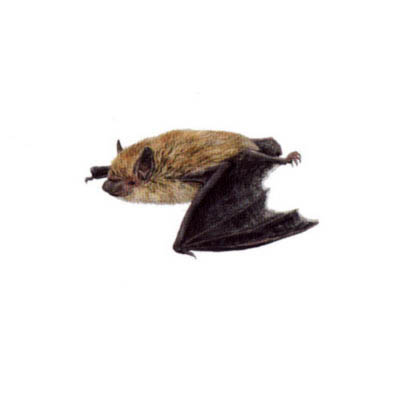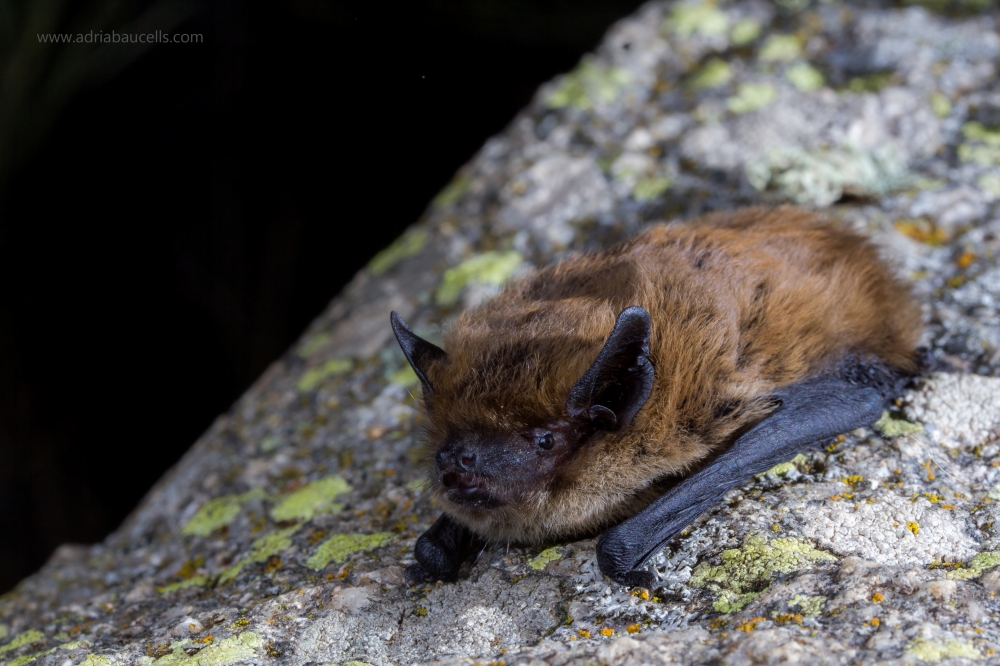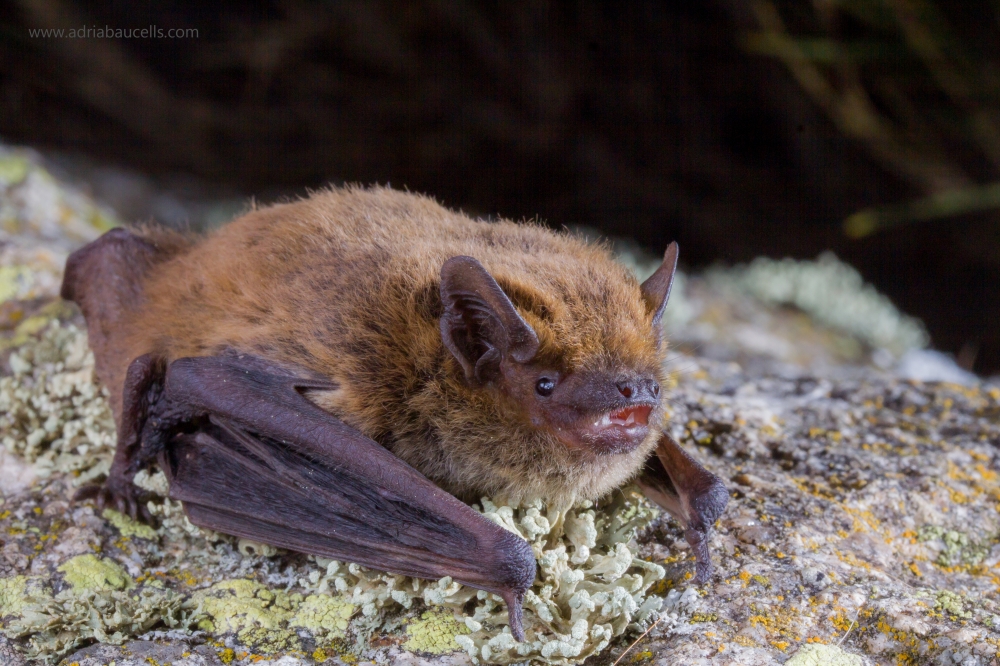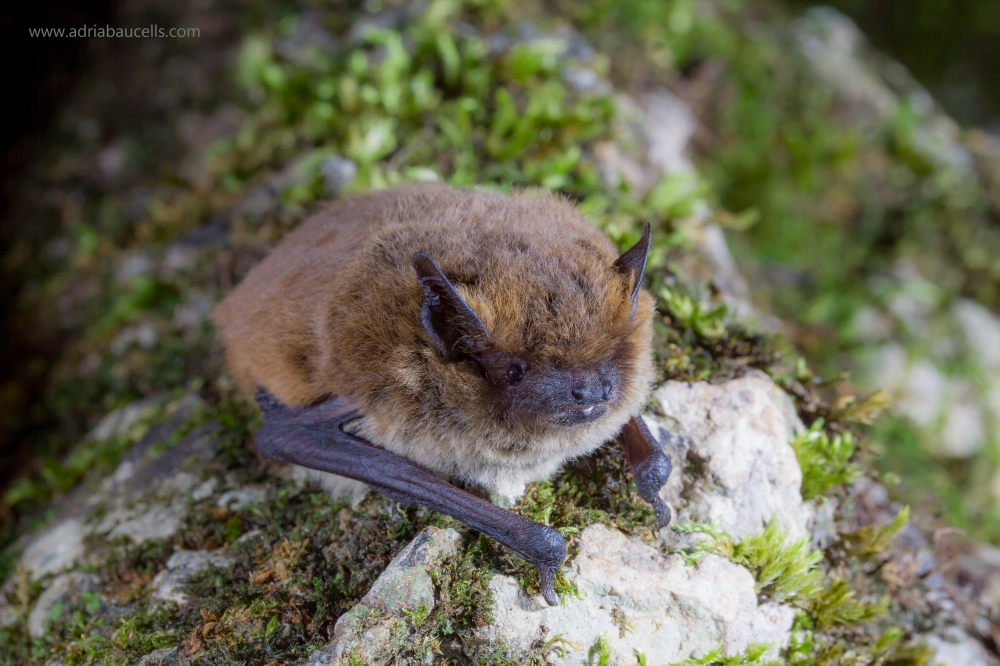Kuhl's pipistrelle bat

Pipistrellus kuhlii (Kuhl, 1819)
Vespertilionidae
Least Concern
| Other names | |
|---|---|
| Catalan | Pipistrel·la de vores clares |
| Spanish | Murciélago de borde claro |
| English | Kuhl's pipistrelle bat |
| French | Pipistrelle de Kuhl |
| Basque | Kuhl pipistrelo |
| Galician | Morcego de breira branca |
Description
Small to medium-sized bat with a total length between 40 and 50 mm (head and body), a forearm length between 30 and 37 mm, a wingspan of 210 to 230 mm, a tail that can measure from 30 to 40 mm, ears of about 12 to 13 mm, and a weight ranging from 5 to 10 g. The pelage of this species is quite variable. The dorsal fur is generally beige or yellowish-brown, while the ventral fur is usually pale, whitish, or yellowish, although there is not usually a very pronounced contrast. The face and ears of adults are usually brownish, while in young individuals, they tend to be darker. The wing membrane is dark, and on the outside of the membrane between the fifth digit and the foot, there is a distinctly white line of about 1-2 mm. Very rarely, this line is not present.
Closely resembling other pipistrelles, the Kuhl's pipistrelle is the only one that has a single-cusped upper incisor. However, the fur is usually lighter than that of the common pipistrelle (Pipistrellus pipistrellus) and Nathusius' pipistrelle (Pipistrellus nathusii).
Fotografies
Distribution
Its distribution is clearly Mediterranean. The traditional northern limit was found in northwest France, southern Germany, Austria, Slovakia, the Czech Republic, Poland, and Ukraine, extending eastwards through southern Russia. However, it is a species that seems to benefit from Climate Change, with increasingly frequent sightings further north, in places such as England and the Netherlands. It is also found on all Mediterranean islands, the Canary Islands (Gran Canaria, Fuerteventura, and Lanzarote), throughout northern Africa, the Middle East, the entire Arabian Peninsula to Afghanistan, Turkmenistan, and Kazakhstan.
Roosts and phenology
The breeding colonies are usually found in crevices of cliffs or, more frequently, in buildings behind walls, windows, and under roofs. Some exceptional shelters have included empty concrete tubes, the nest of a Bonelli's eagle (Hieraaetus fasciatus), and in nests of common swallows (Hirundo rustica) and house martins (Delichon urbicum). Locally, colonies are also found in tree cavities. Breeding colonies typically consist of 20 to 100 individuals, with adult males staying in these colonies only exceptionally. Although this species forms mixed colonies with similar bats, it is often a strong competitor, frequently displacing the common pipistrelle (Pipistrellus pipistrellus) in the Mediterranean. Juveniles are born between late May and early June and usually become sexually mature in their first autumn.
Mating occurs in August and September. It appears that this species exhibits behavior similar to "swarming" in late August and during the autumn. Males engage in mating flights to attract females. Hibernation refuges are typically in building crevices and rock clefts. In the Mediterranean area, hibernation is easily interrupted, and active bats can be found on warm days.
Habitat and diet
A highly anthropic species, usually found below 1,000 meters above sea level, although there are records up to 2,000 meters in altitude. It tends to hunt in inhabited areas, often frequenting locations with artificial lighting, such as parks and gardens near water bodies. This pipistrelle takes advantage of degraded habitats, including areas of intensive agriculture and recently deforested zones, contributing to its expansion throughout the Mediterranean basin and central Europe. It typically avoids extensive forested areas.
It has a generalist diet and it varies with the habitat it occupies. In urban areas and near water bodies, it primarily feeds on hymenopterans like ants, dipterans such as midges and mosquitoes, as well as many other flying insects such as beetles, hemipterans, and mayflies. During certain times of the year, small beetles and crane flies can be a significant part of its diet. The hunting style is typical of a pipistrelle, agile, fast, and highly maneuverable in confined spaces. It usually hunts around artificial lighting, as well as along forest edges and natural corridors. The bat typically flies at an altitude of 2-10 meters and mainly during the evening and early night hours.
Echolocation
Its echolocation is typical of the Pipistrellus genus, with calls composed of a highly modulated first part (FM) and a second nearly constant part (QCF). In this species, however, it presents calls with a duration of about 14 ms and a frequency of maximum intensity (FME) between 34 and 41 kHz. The echolocation calls are indistinguishable from those of Nathusius' pipistrelle (Pipistrellus nathusii), and therefore both species are included in the phonic group Pipistrellus kuhlii/P. nathusii. However, the social calls of the two species allows for identification.
Status
According to the IUCN Red List, it is considered Least Concern, with an uncertain population trend. This species is protected by national laws in various countries, such as the Eurobats Agreement, the Bern Convention, and the European Directive on Habitats and Species. The species is common throughout its distribution, and there has been an observed expansion of its distribution areas in recent decades. Specific colonies may be threatened by building renovations.




